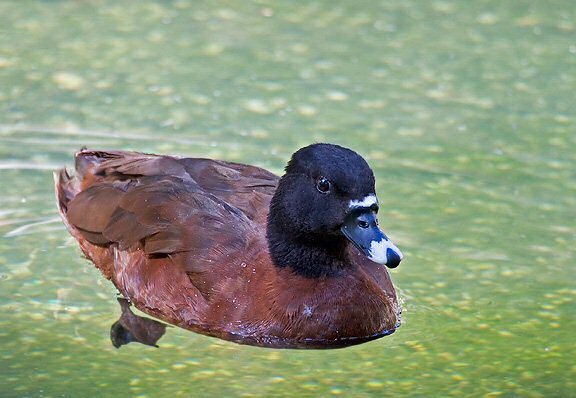
Hartlaub's duck(Pteronetta hartlaubii)
Phylum —chordata
Class — aves
Order — anseriformes
Family — anatidae
Genus –pteronetta
Appearance
This is a large duck with a black bill, reddish brown eyes, and dark yellow-brown legs. The head and upper neck are black with variable white on forehead. The neck, breast, and belly are a rich chestnut brown and the tail, rump, and upper wing an olive-brown.
Size – approximately 56 to 58 cm (22 to 23 in.) long, weight – 415 to 430 g (14.5 to 15.05 oz.).
Habitat
Hartlaub's duck is resident in equatorial West and Central Africa, from Guinea and Sierra Leone east through Nigeria to South Sudan, and south to Gabon, Congo and Zaire.
The species is found in forested areas, in particular in secluded marshes and pools within dense, swampy, lowland tropical evergreen forest and gallery forest. It is also found along small rivers and streams in well-wooded savanna areas, and is recorded from salt pans in Congo and Cameroon. It requires areas of open water such as large rivers or lakes on which to molt.
Diet
This species generally feeds nocturnally, its diet consisting of aquatic invertebrates (insects, arachnids, crustaceans and mollusks), seeds, and roots.
Reproduction
Nesting takes place on the ground. Birds lay from 7 to 11 eggs and incubates them for a month. Chicks are completely covered with plumage in two months.
The male of this duck takes a lively part in the upbringing of the offspring and fiercely protects it from any enemies, which is very unusual for ducks.
Incaptivity
The average lifespan is about 10 years.
In captivity, these ducks are rarely bred. For feeding, it is recommended to use their usual food: larvae and pupae, invertebrates, aquatic animals, aquatic vegetation, seeds, small fish, snails and crabs.
 Russian
Russian
 English
English
























